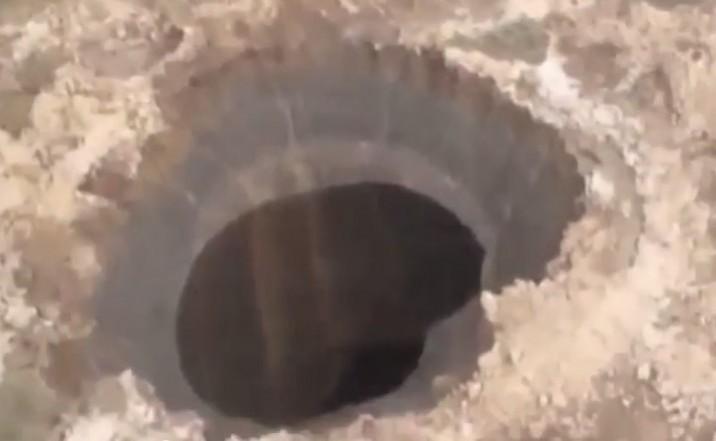
A huge and mysterious crater, spotted in a remote Siberian land ironically known as the "End of the World," has intrigued people and scientists alike as no one has been so far able to establish what caused the giant hole.
The crater – which looks like a seeming bottomless pit – was reportedly spotted by an oil-and-gas industry helicopter flying overhead in the area, which is known for devastating events such meteor shower, peculiar weather conditions and so forth.
What has baffled people more is the subtle indication that this could be a sign of Armageddon, as the place where it has been found is known as Yamal, which is directly translated as "the end of the world."
The striking abyss is believed to be up to 80 meters wide although its depth has not been estimated yet. A scientific team sent to investigate the hole was due to arrive at the scene on Wednesday, reports Siberian Times.
The cause of its sudden appearance in the remote Siberian land is not yet known, although one scientific claim, cited by the newspaper, is that global warming may be to blame.
There is additional speculation that the giant hole – that appeared close to a forest some 30 kilometers from Yamal's biggest gas field Bovanenkovo – could be caused by a space object – possibly a meteorite – striking earth. It could also be a sinkhole caused by collapsing rock beneath the hole caused by an unknown reason.
Startled helicopter passengers told their pilot to loiter over the mysterious crater as they came by the mind-blowing hole. The passengers were cited as saying the hole was big enough for their helicopter – and 18 meter long Mi8 – to have comfortably enter the crater without touching the sides.
The most deadly meteor impact of modern times known as "The Tunguska air burst" – took place in the region in 1908. The impact flattened vast swathes of forest over a 2,000 square kilometer area.
No streak in the sky, flash of explosion or seismic events has been recorded in the recent time, but the hole has, nonetheless appeared.

















